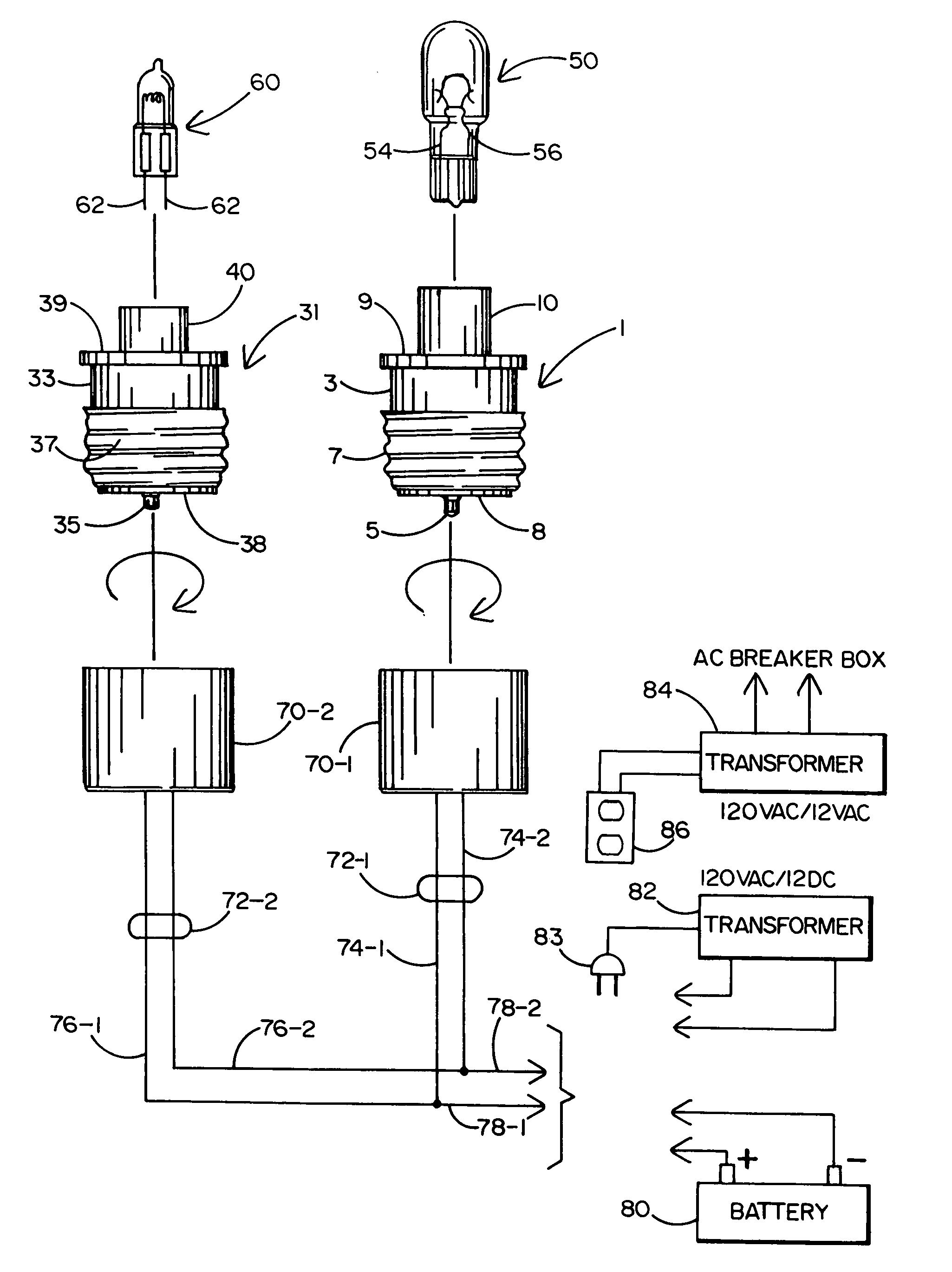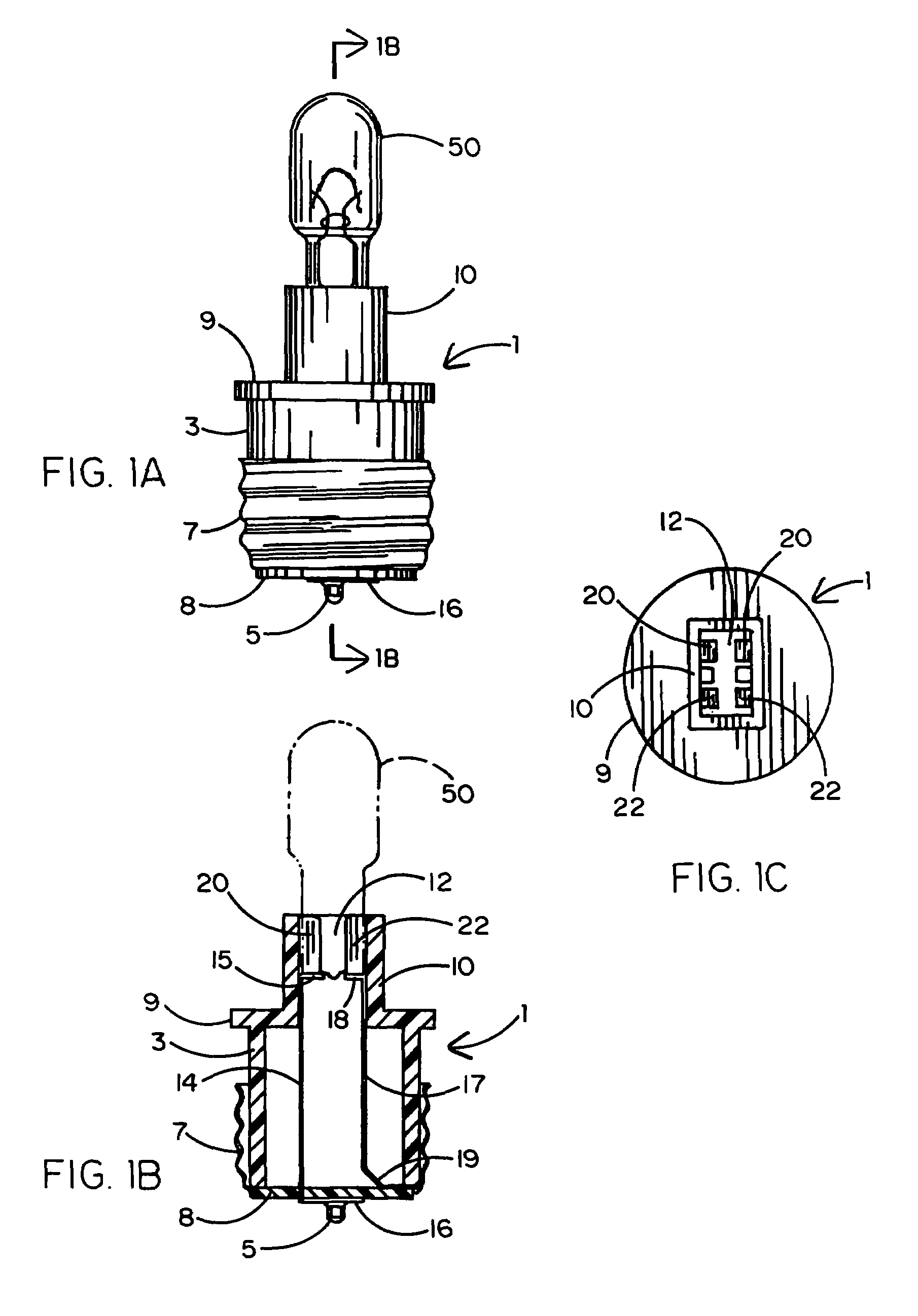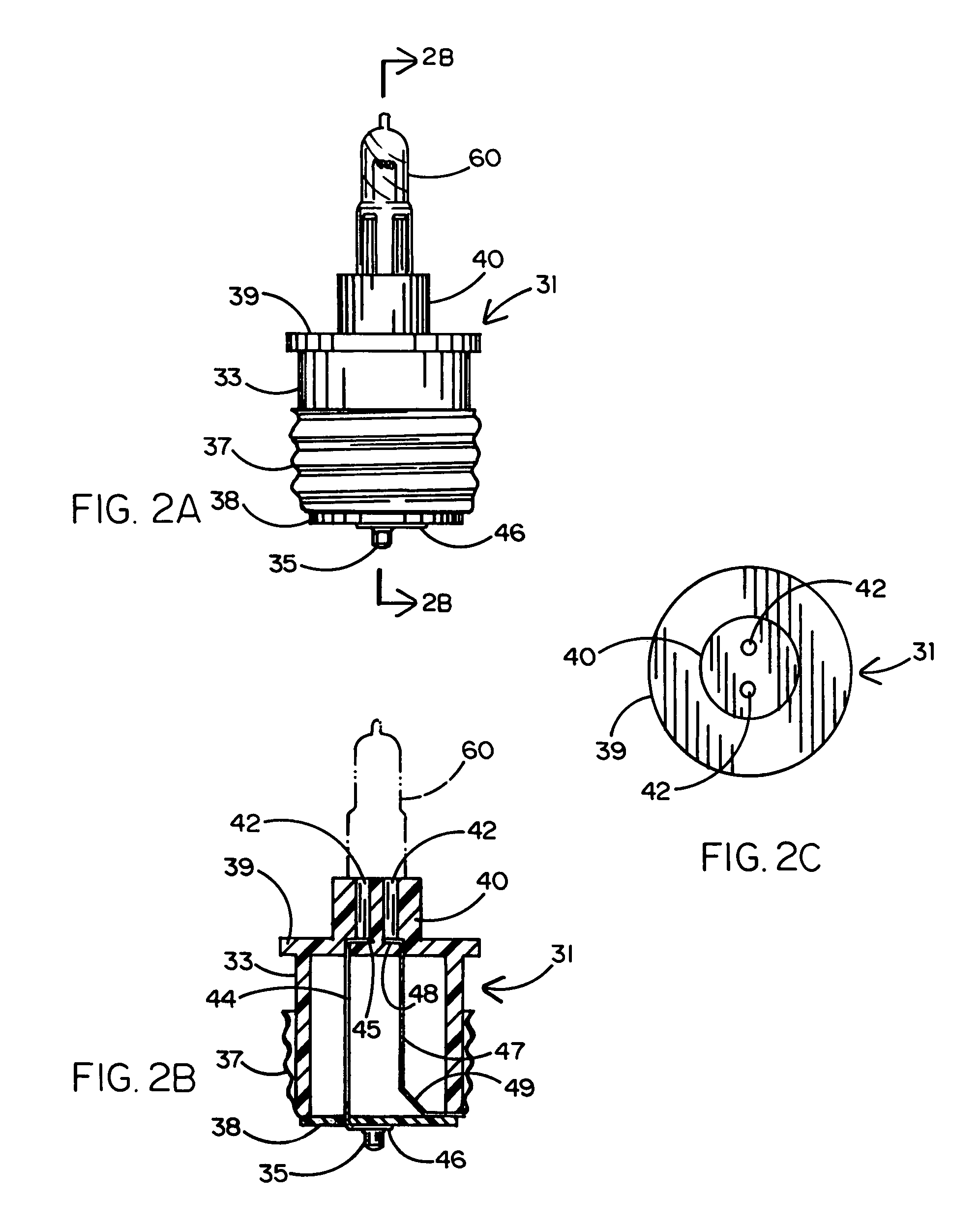Adapter for connecting a low voltage light bulb to a standard electrical light socket
a low voltage light bulb and adapter technology, which is applied in the direction of electrical discharge lamps, coupling device connections, lighting and heating apparatus, etc., can solve the problems of inefficient energy consumption, inconvenient installation, and inability to meet the needs etc., and achieve the effect of reducing the overall cost of lighting a room and reducing the cost of consumption
- Summary
- Abstract
- Description
- Claims
- Application Information
AI Technical Summary
Benefits of technology
Problems solved by technology
Method used
Image
Examples
Embodiment Construction
[0016]Referring initially to FIGS. 1A, 1B and 1C of the drawings, there is shown a lamp socket adapter 1 according to a first preferred embodiment to which a first small, commercially-available low voltage wedge base bulb 50 is to be coupled. As will soon be explained, the lamp socket adapter 1 is rotated into mating engagement with a standard lamp socket (sometimes known as an Edison socket) of the kind that has heretofor been connected by means of an electrical cord to a source of 120 volts AC at an electrical wall receptacle commonly found in houses and office buildings. However, as will also be explained, a 12 volt AC or DC source (e.g., a battery or an AC to DC voltage converter or an AC to AC transformer) is interconnected with the standard lamp socket so that the wedge base bulb 50 of this embodiment can be powered instead by a supply of low voltage.
[0017]Thus, by virtue of the lamp socket adapter 1 herein disclosed, an off-the-shelf, low voltage wedge base bulb 50 which is k...
PUM
 Login to View More
Login to View More Abstract
Description
Claims
Application Information
 Login to View More
Login to View More - R&D
- Intellectual Property
- Life Sciences
- Materials
- Tech Scout
- Unparalleled Data Quality
- Higher Quality Content
- 60% Fewer Hallucinations
Browse by: Latest US Patents, China's latest patents, Technical Efficacy Thesaurus, Application Domain, Technology Topic, Popular Technical Reports.
© 2025 PatSnap. All rights reserved.Legal|Privacy policy|Modern Slavery Act Transparency Statement|Sitemap|About US| Contact US: help@patsnap.com



